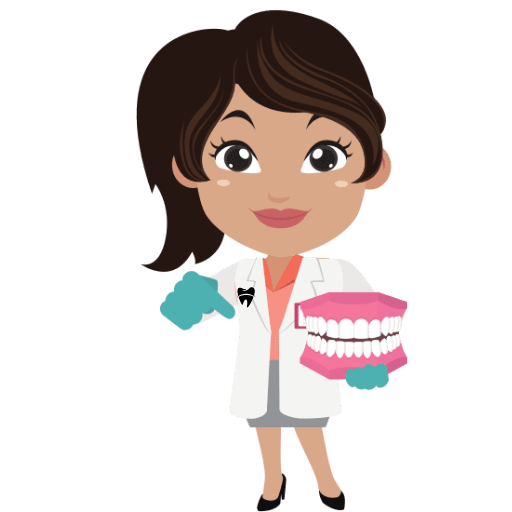Welcome to “Understanding the Price of Dental Crowns: A Comprehensive Guide.” This informative article aims to shed light on the intricate world of dental crowns and provide a detailed breakdown of the associated costs. Dentistry can be a complex field, and the price of a dental crown can vary significantly depending on various factors. By delving into the underlying considerations that contribute to the cost, we aim to equip you with the knowledge necessary to make informed decisions when it comes to your oral health. Whether you’re seeking a dental crown for restorative purposes or cosmetic improvements, our professional and comprehensive guide will empower you to understand the price dynamics associated with this crucial dental procedure.
1. Introduction to Dental Crowns: An Overview of Their Purpose and Function
Dental crowns serve a crucial role in restorative dentistry, as they are designed to repair damaged or weakened teeth. These tooth-shaped caps are custom-made to cover the entire visible portion of a tooth, providing strength, protection, and improved aesthetics. Dental crowns are commonly used to address various dental issues, such as:
-
- Severe tooth decay: When a tooth is extensively decayed, a crown can be placed over it to restore its structure and function.
- Cracked or fractured teeth: Crowns can help hold the cracked or fractured segments of a tooth together and prevent further damage.
- Large fillings: Teeth with large fillings or multiple fillings may benefit from the added support and reinforcement provided by crowns.
- Root canal treatment: After a tooth has undergone root canal therapy, a crown is typically placed to protect the treated tooth and restore its strength.
In addition to their practical purposes, dental crowns are available in a variety of materials which can be matched to the natural color of the patient’s teeth, ensuring a seamless blend with the surrounding dentition. Common crown materials include:
-
- Porcelain: Often chosen for its ability to closely mimic the appearance of natural teeth, porcelain crowns are an excellent choice for highly visible teeth.
- Metal: Generally made of gold alloy or other metal materials, metal crowns are exceptionally durable and are often used for molars or teeth that undergo heavy biting forces.
- Porcelain-fused-to-metal (PFM): Combining the strength of metal with the aesthetics of porcelain, PFM crowns offer a balanced solution for both durability and natural-looking results.
2. The Process of Dental Crowns: From Diagnosis to Installation
Once a dentist has determined that a dental crown is necessary to restore a tooth, the process of obtaining and installing the crown begins. The first step in the process is diagnosis, during which the dentist thoroughly examines the affected tooth and the surrounding area. This may involve X-rays to assess the extent of damage or decay. Based on this diagnosis, the dentist will then develop a treatment plan that includes the placement of a dental crown.
The next step is preparation, where the dentist will reshape the tooth to ensure a proper fit for the crown. This entails removing a small portion of the tooth enamel to make room for the crown. After this, the dentist takes impressions of the tooth and surrounding teeth, which are sent to a dental laboratory to create a custom-made crown. In the meantime, a temporary crown is placed over the prepared tooth to protect it.
- Step 1: Diagnosis
- Step 2: Preparation
- Step 3: Impression
- Step 4: Temporary Crown Placement
Once the custom crown is ready, the installation process begins. The temporary crown is removed, and the dentist checks the fit and appearance of the new crown. Any necessary adjustments are made before the crown is permanently cemented into place. After installation, the dentist ensures that the bite is correct and may make further refinements if needed. Patients are advised to follow proper oral hygiene practices and schedule regular dental check-ups to ensure the longevity and functionality of the dental crown.
3. Materials Used in Dental Crowns: Exploring Different Options and Their Costs
When it comes to dental crowns, there are several different materials that can be used depending on the patient’s needs and preferences. Each material has its own unique properties and considerations, including aesthetic appearance, durability, and cost. Here, we will explore some of the most common materials used in dental crowns:
-
- Porcelain-Fused-to-Metal (PFM) Crowns: PFM crowns are a popular choice due to their natural-looking appearance. These crowns consist of a metal substructure covered with tooth-colored porcelain. They offer good strength and durability but may be more prone to chipping or wear over time.
- All-Ceramic Crowns: These crowns are made entirely from ceramic material, such as zirconia or lithium disilicate. They provide excellent aesthetics and can closely mimic the natural look of teeth. All-ceramic crowns are durable and resistant to staining, making them a great choice for patients who prioritize aesthetics.
- Gold Crowns: Gold crowns have been used in dentistry for many years and are known for their longevity and biocompatibility. Although they are less commonly used today, they are still preferred by some patients for their strength and durability. Gold crowns offer excellent wear resistance and are gentle on opposing teeth.
It is important to note that the cost of dental crowns can vary depending on the material chosen. Generally, PFM crowns tend to be more affordable, while all-ceramic and gold crowns may be on the higher end of the price spectrum. The cost considerations should be discussed with your dentist, taking into account factors such as the location of the tooth, your insurance coverage, and your individual preferences.
4. Factors Affecting the Price: Understanding Variables that Determine the Cost of Dental Crowns
In order to understand the cost of dental crowns, it is important to consider several factors that can affect the overall price. These variables can vary between different dental practices and individual cases. By understanding these factors, patients can gain a better understanding of why the cost of dental crowns may differ.
1. Material: The material used for the dental crown can greatly impact the price. There are different options available, including porcelain, metal, and resin. Porcelain crowns tend to be more expensive due to their natural appearance and durability. On the other hand, metal crowns may be a more affordable option.
2. Location: The location of the dental practice also plays a role in determining the cost of dental crowns. Urban areas, where the cost of living is generally higher, may have higher prices compared to rural areas. Furthermore, different countries may have varying dental care costs.
5. Additional Procedures and Costs: Beyond the Crown Installation
In addition to crown installation, there may be certain additional procedures required to ensure the success and longevity of your dental treatment. These procedures are not always included in the initial cost estimate and may incur additional charges. It is important to understand these additional procedures and their associated costs to have a comprehensive understanding of your treatment plan.
Some of the common additional procedures that may be required include:
- Root Canal Therapy: In cases where the tooth’s pulp is infected or damaged, a root canal procedure may be necessary before crown installation. This treatment removes the infection or injured pulp and safeguards the tooth’s structure.
- Biopsy or Impression: Occasionally, a biopsy or impression may be needed to accurately determine the cause of an oral issue or to create a customized crown. These procedures might involve additional visits and costs, which will be discussed with you beforehand.
Please note that the specific additional procedures and associated costs can vary depending on your individual dental needs. Our experienced dental team will thoroughly assess your condition and provide you with a detailed treatment plan, including any necessary extra procedures and associated costs. We are committed to ensuring that you have a comprehensive understanding of all aspects of your dental treatment.
6. Insurance Coverage for Dental Crowns: Navigating Policies and Reimbursement
When it comes to insurance coverage for dental crowns, understanding your policy and navigating the reimbursement process can be daunting. However, having a clear understanding of what your insurance covers and the steps involved in getting reimbursed can save you both time and money. Here are some key points to consider:
1. Check your policy:
- Review your insurance policy to determine if dental crowns are covered.
- Look for specific information on coverage limits, waiting periods, and any exclusions or restrictions.
- Understand the different types of dental plans available, such as PPO, HMO, and indemnity plans, and how they may affect your coverage for dental crowns.
2. Pre-authorization and documentation:
- Contact your dental insurance provider to verify if pre-authorization is required for dental crown procedures.
- Gather all necessary documentation, such as X-rays, dental records, and treatment plans, to support your claim.
- Submit the documentation to your insurance provider well in advance to ensure a smoother reimbursement process.
Remember to communicate openly and effectively with your dental care provider and insurance company to avoid any misunderstanding or delays in reimbursement. By staying informed and proactive, you can navigate your insurance coverage for dental crowns with confidence and ease.
7. Hidden Costs and Financial Considerations: Budgeting for Dental Crown Treatment
When budgeting for dental crown treatment, it is essential to consider not only the upfront cost but also any hidden costs that may arise. By being aware of these financial considerations, you can better plan and budget for your dental crown procedure. Here are some key points to keep in mind:
-
- Insurance Coverage: Before proceeding with dental crown treatment, consult your dental insurance provider to determine what portion of the cost is covered. Be sure to inquire about any restrictions or waiting periods that may apply.
- Initial Consultation: Many dentists charge an initial consultation fee, which typically includes an examination and X-rays to assess your dental condition and identify any underlying issues.
- Diagnostic Tests: In some cases, additional diagnostic tests such as a dental CT scan or 3D imaging may need to be performed. These tests can provide more comprehensive information for the treatment plan, but they may come with an additional cost.
- Material Choice: Dental crowns can be made from different materials, each with varying costs. Discuss with your dentist the pros and cons of different materials, such as porcelain, metal, or zirconia, to determine the best option based on your budget and aesthetic preferences.
It is worth noting that dental crown treatment often involves multiple appointments, such as tooth preparation, temporary crown placement, and final crown placement. Each of these visits may have associated costs, so it is crucial to inquire about the overall cost breakdown and payment options available to you. By considering these hidden costs and financial considerations, you can make an informed decision and plan your budget accordingly for dental crown treatment.
8. Affordable Alternatives to Traditional Dental Crowns: Exploring Options for Cost-Conscious Patients
When it comes to dental crowns, cost-conscious patients often look for affordable alternatives to traditional options. Fortunately, there are several options available that provide the same level of functionality and aesthetics without breaking the bank. Here, we explore some of these alternatives:
1. Porcelain-Fused-to-Metal (PFM) Crowns: These crowns combine the strength of metal with the natural appearance of porcelain. They are more affordable than all-porcelain crowns and are a popular choice for cost-conscious individuals who seek durability and a natural-looking restoration.
2. Zirconia Crowns: Zirconia is a type of ceramic that is prized for its strength and durability. Zirconia crowns can be an excellent alternative to traditional porcelain crowns as they offer comparable aesthetics and can withstand heavy biting forces. These crowns are a cost-effective option for patients seeking a long-lasting and affordable solution.
9. Dental Tourism: Is It a Viable Option for Obtaining Affordable Dental Crowns?
When it comes to obtaining affordable dental crowns, dental tourism has become an increasingly popular option for many individuals. Dental tourism involves traveling to another country to receive dental treatment, often at a fraction of the cost compared to their home country. However, while it may seem like a cost-effective solution, it is essential to carefully consider several factors before embarking on dental tourism for dental crowns.
One of the primary advantages of dental tourism for obtaining affordable dental crowns is the significant cost savings. Patients can save up to 70% on dental treatment costs by choosing a reputable dental clinic in a country where overhead expenses, such as rent and labor, are significantly lower. Moreover, dental tourism also offers the opportunity to combine dental treatment with a vacation, allowing patients to enjoy a beautiful destination and relax after the procedure. However, it is crucial to thoroughly research and choose a dental clinic with a proven track record, well-trained professionals, and high-quality materials to ensure optimal outcomes and patient safety.
-
- Consideration of the following aspects is essential before opting for dental tourism:
- Language barriers and communication with the dental professionals
- Quality of dental materials used in the treatment
- Cross-checking the qualifications and experience of the dental professionals
- Availability of aftercare and follow-up services
- Researching the reputation and reviews of the chosen dental clinic
While dental tourism can be a viable option for obtaining affordable dental crowns, patients should carefully evaluate the potential risks and benefits. With thorough research and careful planning, individuals can avail themselves of top-quality dental care at a fraction of the cost, making dental tourism a potentially valuable option for those seeking affordable dental crowns.
10. Long-Term Maintenance of Dental Crowns: Tips for Preserving Your Investment
Preserving the longevity and functionality of your dental crowns is crucial to ensuring a lasting investment. By following these expert tips, you can maintain the integrity of your dental crowns and avoid unnecessary complications.
- Practice good oral hygiene: Brushing and flossing regularly is essential for maintaining the health of your dental crowns. Use a soft-bristled toothbrush and non-abrasive toothpaste to gently clean around the crown and the adjacent teeth. Incorporate antimicrobial mouthwash into your routine to further protect against plaque buildup.
- Avoid hard or sticky foods: Dental crowns are durable, but they can still be susceptible to damage. Avoid chewing on hard objects, such as ice or hard candy, as they can potentially chip or break the crown. Additionally, sticky foods like caramel or chewing gum can dislodge the crown or cause it to become loose.
- Attend regular dental check-ups: Regular visits to your dentist are essential for the long-term maintenance of your dental crowns. Dentists can detect any issues early on and provide necessary treatments to prevent further complications. During these appointments, your dentist will also professionally clean your teeth and examine the condition of your dental crown.
By implementing these preventive measures, you can extend the life of your dental crowns, ensuring they serve you well for years to come. Remember to consult your dentist if you experience any discomfort or notice any changes in your dental crown’s appearance or fit.
FAQ
Q: What are dental crowns and why might I need one?
A: Dental crowns are prosthetic devices that are designed to cover damaged or weakened teeth. They help to restore the tooth’s functionality, aesthetics, and strength. Dental crowns may be necessary in various situations, such as when a tooth has suffered from extensive decay, fractures, or when undergoing root canal treatment.
Q: How much do dental crowns typically cost?
A: The cost of dental crowns can vary depending on several factors. These include the material used, the complexity of the case, location, and the dentist’s experience. On average, the cost for dental crowns can range from $800 to $2000. However, it is advisable to consult with your dentist for an accurate estimate based on your specific needs.
Q: What materials are commonly used for dental crowns?
A: There are several materials used for dental crowns, each with its own set of advantages and cost considerations. Some of the most common materials include porcelain-fused-to-metal (PFM), all-ceramic, all-metal (gold alloy), and zirconia. The choice of material depends on factors such as aesthetics, strength requirements, and your dentist’s recommendation.
Q: Are dental crowns covered by insurance?
A: Dental insurance coverage for dental crowns varies depending on your insurance plan. While some insurance plans may cover a portion of the cost, others may impose limitations on the type of material used or the number of crowns per year. It is advisable to review your insurance policy or consult with your provider to understand what is covered under your plan.
Q: How long do dental crowns typically last?
A: The durability of dental crowns depends on several factors, including oral hygiene, biting force, and the material used. On average, dental crowns can last anywhere from 5 to 15 years. However, with proper care and regular dental check-ups, they can potentially last even longer.
Q: What kind of maintenance is required for dental crowns?
A: Dental crowns require regular oral hygiene practices, just like natural teeth. This includes brushing twice a day, flossing, and regular dental check-ups. It is also important to avoid biting on hard objects or using your teeth as tools, as this can potentially damage the crown. Maintaining good oral health habits will help prolong the lifespan of your dental crowns.
Q: Can dental crowns be repaired or replaced if damaged?
A: Depending on the extent of damage, dental crowns can sometimes be repaired. However, in cases where significant damage has occurred or the crown is beyond repair, it may be necessary to replace it. It is important to consult with your dentist in such situations to assess the best course of action.
Q: Are there any alternatives to dental crowns?
A: In some cases, dental crowns may not be the only solution. Alternatives such as dental veneers, inlays or onlays, or dental bonding may be suitable depending on the specific needs of the patient. Your dentist will evaluate your situation and recommend the most appropriate treatment option for you.
Q: How can I find a reputable dentist who provides dental crowns?
A: To find a reputable dentist who provides dental crowns, it is recommended to seek recommendations from family, friends, or colleagues. Additionally, online platforms and dental association websites often include directories of certified dentists. When selecting a dentist, consider their experience, credentials, patient reviews, and the services they provide to ensure you receive quality dental care.
Conclusion
In conclusion, understanding the price of dental crowns is essential for making informed decisions about your oral health and overall well-being. Throughout this comprehensive guide, we have explored the various factors that contribute to the cost of dental crowns, including materials, location, complexity of the procedure, and the expertise of the dentist. While it is crucial to consider the financial aspect, it is equally important to prioritize the quality and longevity of the dental crown. Remember, investing in your dental health now can prevent more extensive and costly treatments in the future.
When considering dental crown options, it is recommended to consult with a qualified dentist who can assess your dental needs and provide an accurate estimate based on your individual case. By doing so, you can ensure that you make an informed decision based on expert advice and an understanding of your specific requirements.
We hope that this guide has shed light on the price factors and considerations associated with dental crowns. Should you have any further questions or concerns, it is best to reach out to a dental professional who can address them in detail. Remember, a healthy and confident smile is priceless, and investing in the right dental crown is a step towards achieving that.




